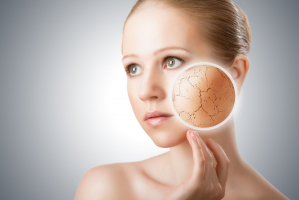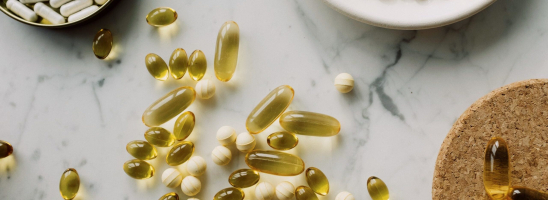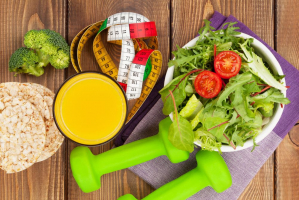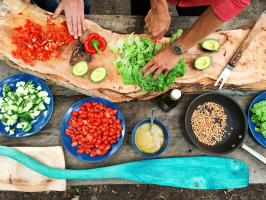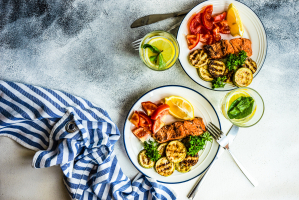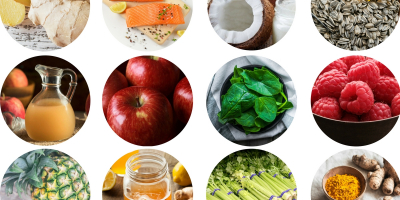Top 8 Best Vitamins and Nutrients for Healthy Nails
Your fingernails might reveal a lot about your overall health. Nail beds are continually producing new nail tissue, and proper vitamin, mineral, and nutrient ... read more...intakes aid in the creation, growth, and strength of new nail cells. A change in the look, texture, or form of your nails might be an indication of vitamin deficiency. Here are the most vital vitamins and minerals for healthy nails.
-
Biotin, commonly known as vitamin B7, coenzyme R, and vitamin H, is a B-complex vitamin. It encourages healthy cell growth and assists in the digestion of protein-building amino acids, which are required for nail growth. Biotin-rich meals and supplements may assist in the strengthening of brittle fingernails. A few modest studies suggest the use of biotin supplements in this regard. In one research of 35 persons with brittle fingernails, 2.5 mg of biotin daily for six to seven months reduced symptoms in 63% of the subjects.
Biotin deficiency is uncommon, and while there is no RDA for biotin, the Adequate Intake (AI) level for adults has been set at 30 mcg per day. Biotin is present in a variety of foods, including egg yolk, dairy products, yeast, salmon, avocado, sweet potato, nuts, seeds, and even cauliflower.
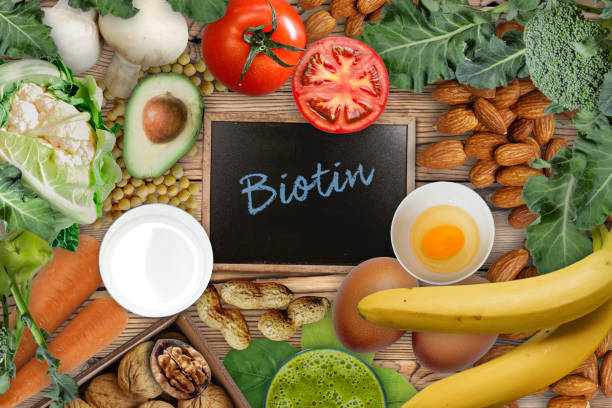
Biotin 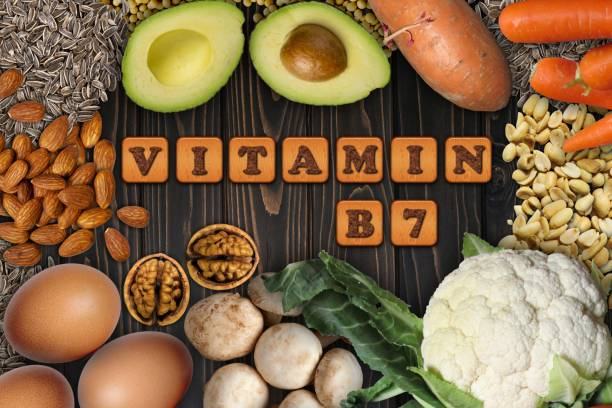
Biotin -
Other B vitamins are also beneficial to nail health. Vitamin B12 aids in iron absorption as well as red blood cell formation. Iron and B12 are both required for strong and healthy nails. A vitamin B12 deficiency can cause completely blue nails, bluish-black pigments with wavy longitudinal dark streaks, and brownish pigmentation. Similarly, folate, or vitamin B9, promotes nail growth and health by aiding in the creation of red blood cells and the generation of new cells. A lack of folate can cause your nails to change color and become hard and brittle.
Adults require 2.4 mcg of vitamin B12 and 400 mcg of folate per day to avoid deficiencies, however, pregnant women require more. Dark green vegetables, citrus fruits, beans, peas, lentils, nuts, seeds, and avocado all contain folate. B12, on the other hand, is found predominantly in animal foods including meat, poultry, fish, eggs, and dairy, however, it can be fortified into other meals and drinks.
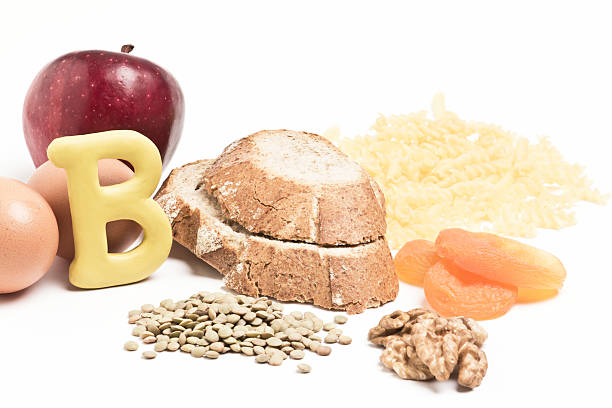
Other B Vitamins 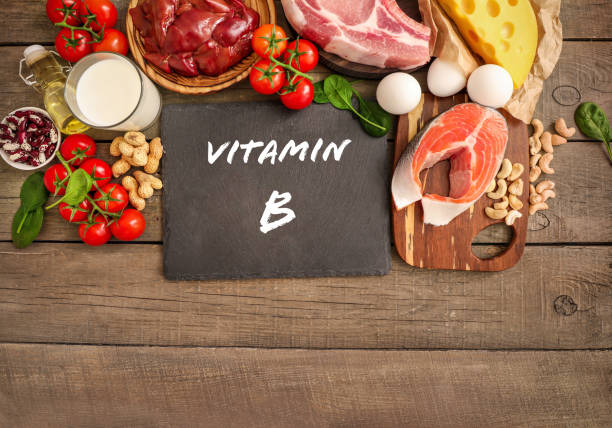
Other B Vitamins -
Iron is found in the core of red blood cells, which transport oxygen to all of your organs and cells, including your nails. Without iron, oxygen does not reach your cells in sufficient quantities. Because healthy nails require oxygen, an iron shortage or anemia can cause vertical ridges in your nails as well as concave or "spoon" nails. The RDA for iron varies greatly based on age and gender. Men should take 8 mg per day, while women aged 19-50 should take 18 mg per day. Women's iron requirements decrease to 8 mg per day around the age of 50 or when they enter menopause.
Iron from animal meals, such as beef, poultry, fish, and eggs, is better absorbed by your body than iron from plant foods, such as dark green leafy vegetables, peanuts, seeds, beans, and other fortified foods. However, combining a vitamin C-rich diet with a plant-based iron food source enhances absorption. Consuming oranges and strawberries alongside a spinach salad with beans and seeds, for example, boosts iron absorption.
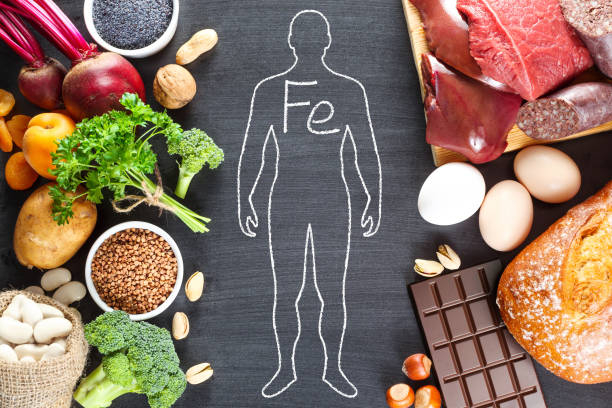
Iron 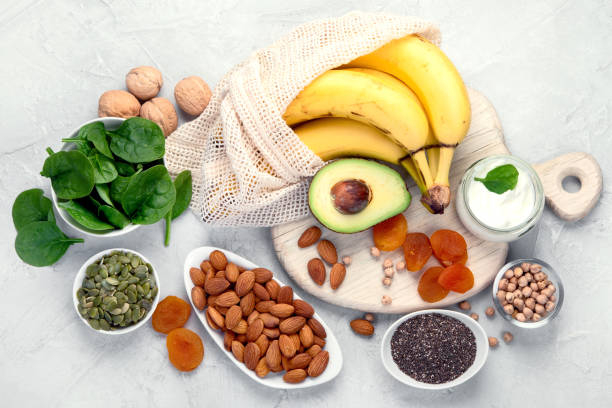
Iron -
Magnesium is a mineral that is involved in over 300 bodily activities, including protein synthesis, which is essential for nail development. Vertical ridges in your nails might indicate magnesium insufficiency. Despite the fact that this mineral is widely available, the World Health Organization (WHO) claims that fewer than 60% of the US population eats the necessary quantity.
The RDA is 400-420 mg for men and 310-320 mg for women per day. Whole grains, particularly whole wheat, are high in magnesium. Dark green leafy vegetables, quinoa, almonds, cashews, peanuts, edamame, and black beans are other excellent sources.
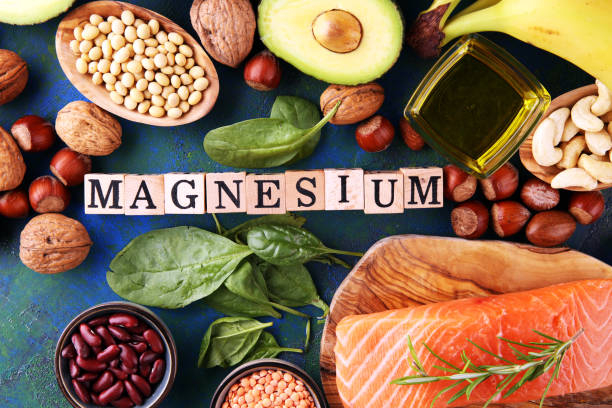
Magnesium 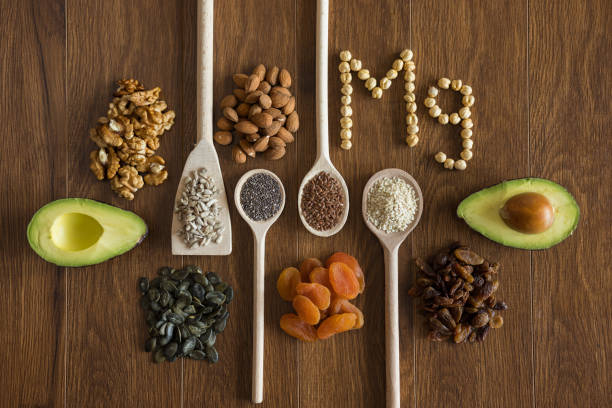
Magnesium -
Keratin, a fibrous structural protein, is the primary component of nails. This is what gives nails their tenacity and toughness. It also shields your nails from harm or stress. Surprisingly, the keratin you see is dead. Dead cells create nails, which your body eliminates as new cells push up from underneath. Eating adequate protein in your diet is vital for increasing keratin synthesis and so developing strong nails, but a lack of protein may result in weaker nails.
Protein RDA is 0.36 grams per pound (0.8 grams per kilogram) of body weight per day. This equates to around 55 grams of protein per day for a 150-pound (68-kg) individual. The Acceptable Macronutrient Distribution Range (AMDR) enables the protein to account for 10-35% of total daily calories, which is much more than the RDA. Animal foods like meat, chicken, fish, eggs, and dairy include protein, as do plant foods like soy, legumes, beans, lentils, nuts, seeds, and whole grains.
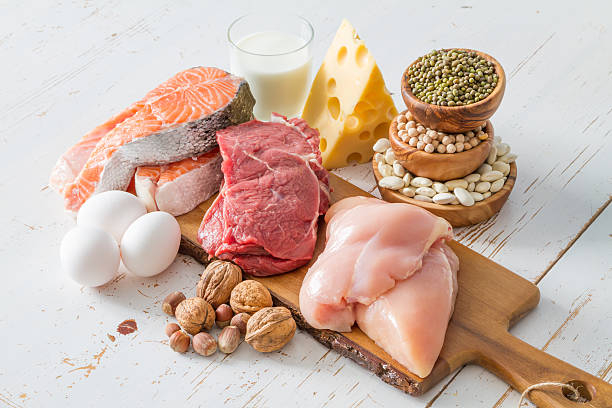
Protein 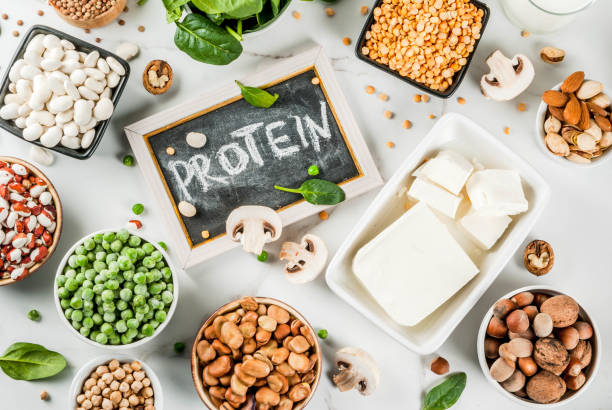
Protein -
Omega-3 fatty acids can assist to lubricate and moisturize your nails, making them seem to shine. These fatty acids may also help to decrease inflammation in your nail bed, which feeds and protects the cells that give birth to your nail plate. Dry and brittle nails may be caused by a deficiency of omega-3 fatty acids.
There is no RDA for omega-3 fatty acids, however, the AI is 1.6 grams for males and 1.1 grams for women per day. According to the AMDR, omega-3s can account for up to 1.6% of total calories. Omega-3s are abundant in fatty fish such as salmon, trout, mackerel, tuna, and sardines, but they may also be found in walnuts, soy, eggs, chia seeds, flaxseeds, and fish and flaxseed oil.
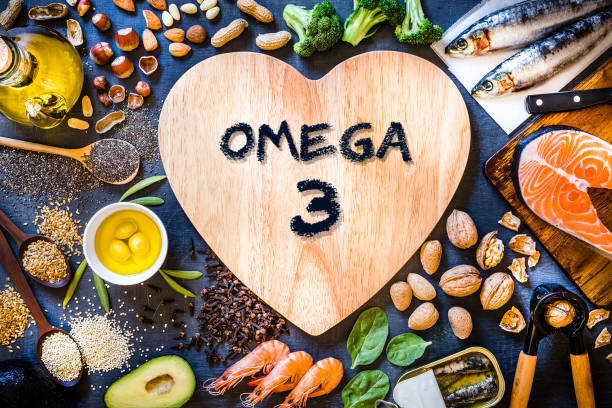
Omega-3 Fatty Acids 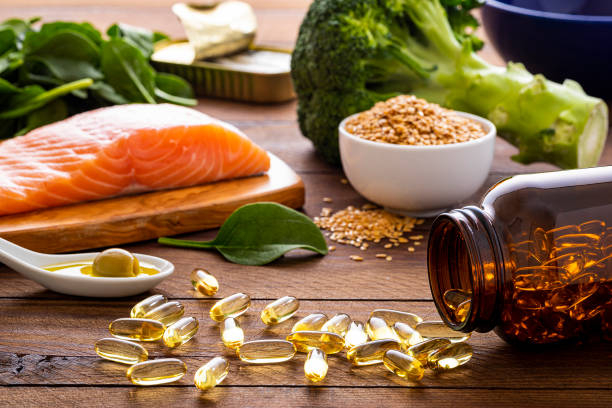
Omega-3 Fatty Acids -
Zinc is necessary for several bodily responses, including cell development and division. Nails are formed up of a sort of cell that quickly develops and divides. Because of this rapid synthesis, a consistent supply of zinc is required to ensure healthy nail development.
Inadequate zinc consumption can lead to nail plate degeneration, resulting in the appearance of white patches on your nails. Zinc RDAs for males and women are 11 mg and 8 mg per day, respectively. Zinc is abundant in animal proteins such as beef, poultry, fish, and eggs. However, it is also found in soy, chickpeas, black beans, nuts (such as almonds and cashews), and seeds.
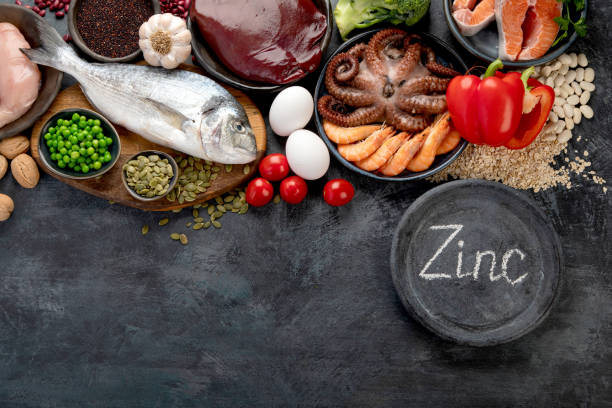
Zinc 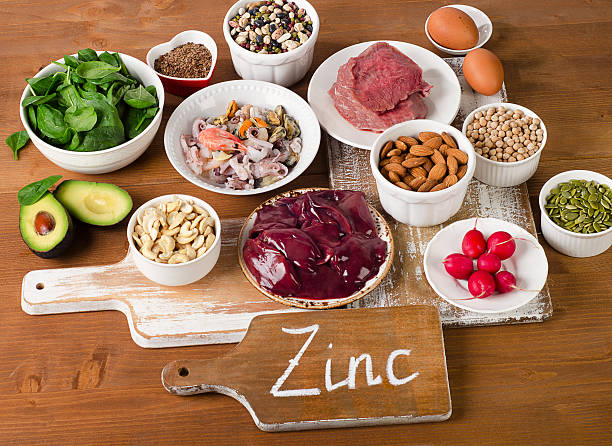
Zinc -
Vitamin C is required for the synthesis of collagen, a protein that gives form, strength, and integrity to numerous tissues and serves as the foundation for fingernails, hair, and teeth. Brittle nails and delayed nail development might occur from a vitamin C deficit.
Vitamin C is an important vitamin that your body cannot make. Men need 90 mg per day, while women need 75 mg. While citrus fruits like oranges, strawberries, and kiwi are believed to be the finest providers of vitamin C, bell peppers, green vegetables, and tomatoes are also abundant in this nutrient. Red bell peppers, in fact, have more than twice the vitamin C content of an orange.
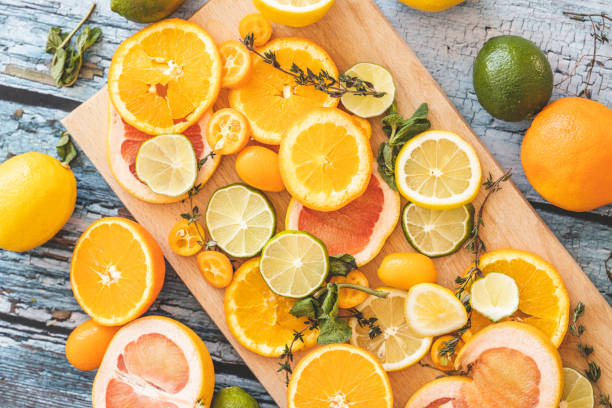
Vitamin C 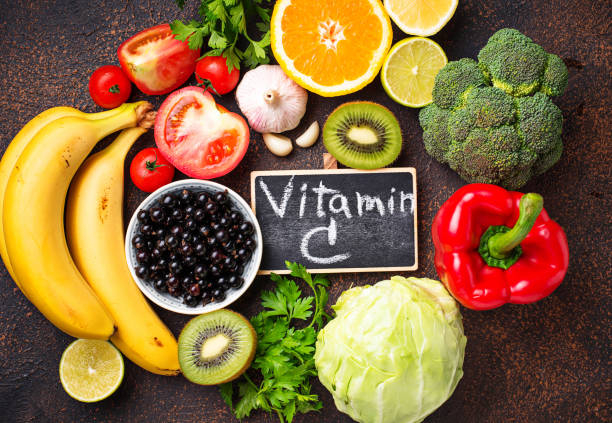
Vitamin C










